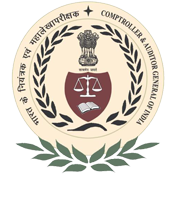Audit Reports

Delhi
Report No.2 of 2018 - Social and Economic Sectors (PSUs) Government of Delhi
Overview
This Report comprises two chapterscontaining audit findings pertaining to Revenue and Social and Economic Sectors (PSUs). Chapter I relating to Revenue Sector contains seven paragraphs involving ` 254.46 crore on underassessment, short payment/loss of revenue, interest and penalty and Chapter II relating to Social and Economic Sectors (PSUs) contains one Performance Audit and eight paragraphs (including one follow up audit) involving ` 102.38 crore.
Chapter I of the Revenue Sector highlights that the total revenue receipts of the Government for the year 2016-17 were ` 34,345.74 crore as compared to ` 34,998.85 crore in the year 2015-16. Out of this, 92 per cent was raised through tax revenue (` 31,139.89 crore) and non-tax revenue (` 380.69 crore). Audit of Department of Trade and Taxes on ‘Issue of Statutory Forms’ revealed thatForms were issued to the dealers without ensuring recovery of past demand and cross checking the purchase amount declared in the returns. The dealers were issued Statutory Forms without having the details of branches/consignment agents and items to be traded, in their certificate of registration. Even after cancellation of the Certificate of Registration (RC) on the basis of adverse remarks, Statutory Forms were issued to the dealers. As a result of such shortcomings, there was irregular issue of Statutory Forms of ` 1,892.78 crore. This also resulted in escape of levy of tax/penalty in some cases amounting to ` 248.08 crore.
Chapter II on Public Sector Undertakings (PSUs) revealed thatout of 17 PSUs, 10 PSUs earned profit of ` 967.60 crore, six PSUs incurred loss of ` 3,488.55 crore. A performance audit on the working of ‘Delhi Scheduled Castes, Scheduled Tribes, Other Backward Classes, Minorities and Handicapped Financial and Development Corporation Limited’brought out deficiencies in poor coverage of targeted population, drawal of lesser funds against allocation and poor recovery of loans. There was significant population of target groups who could be brought under various credit schemes implemented by the Company. There were sufficient funds from the Apex Corporations to provide credits to these target groups. The Company however showed no urgency or concern to implement these credit schemes. Instead of finding eligible beneficiaries to disburse the concessional loans, the Company placed the surplus funds in banks and earned interest. Percentage of disbursement of loan was 45.41 per cent of total available funds in 2012-13 and declined to 12.90 per cent in 2016-17.

